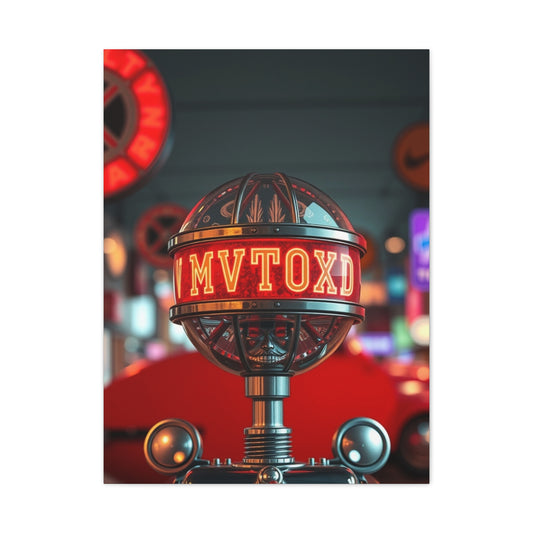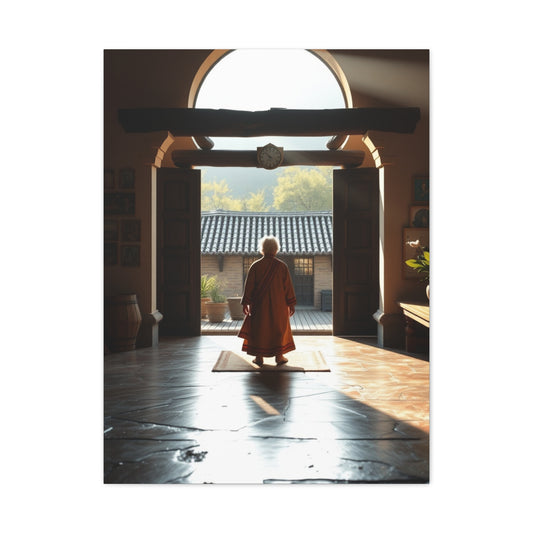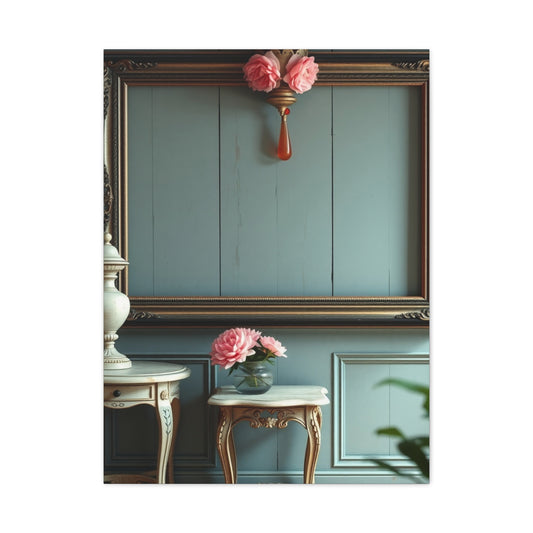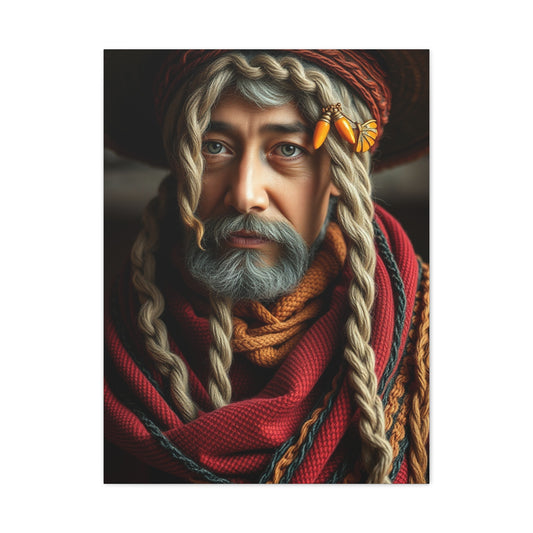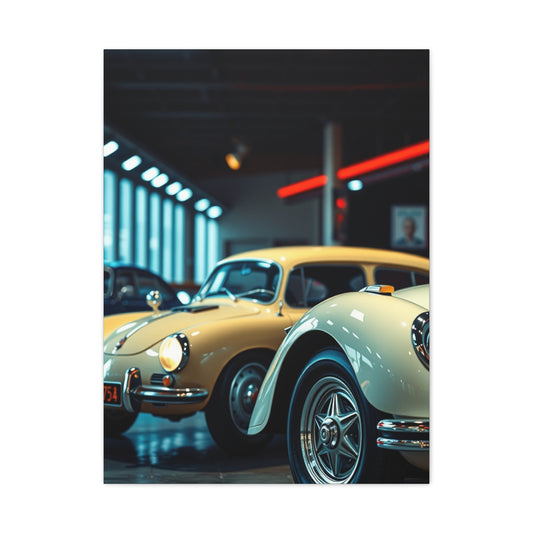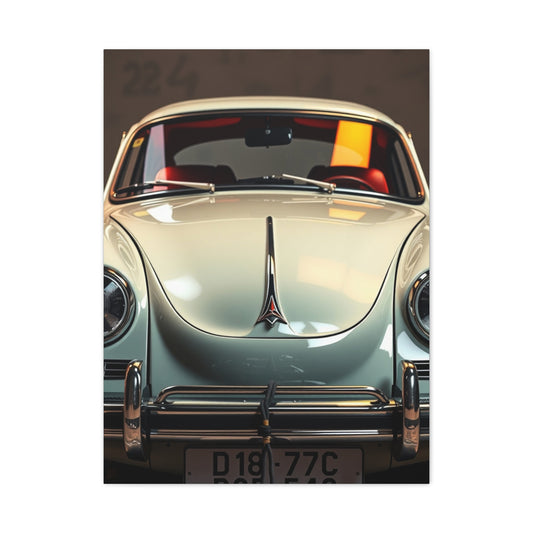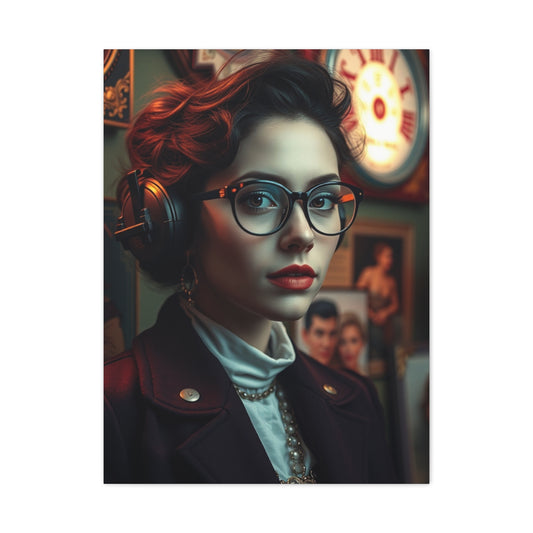Collection: Vintage Wall Art
13 Vintage Wall Art Tips Every Collector Should Know
Wall art has evolved far beyond simple decoration, becoming an essential element that defines personality and atmosphere in a living space. From the grand halls of historical estates to contemporary apartments, wall art has long served as a medium to reflect taste, culture, and emotion. In modern interiors, the diversity of options—from canvas wall art to framed wall pictures—allows homeowners to curate spaces that resonate with their aesthetic preferences. Large wall décor pieces transform blank walls into dramatic focal points, while photo wall art brings personal memories and stories to life, creating a dialogue between the space and its inhabitants. The contemporary demand for modern wall art and abstract wall art has also surged, appealing to those who seek minimalistic forms, geometric patterns, or vibrant splashes of color that invigorate a room without overwhelming it. Bedroom wall décor and living room wall pictures serve functional purposes as well, enhancing ambiance and complementing furniture arrangements, while custom wall art allows a more intimate and personalized expression, giving a sense of ownership and individuality to the space.
Historical Background
The history of wall art stretches across centuries, reflecting the changing tastes, technologies, and societal structures of each era. Early civilizations employed mural paintings and carved reliefs to communicate stories, beliefs, and traditions. The Renaissance period elevated wall art to a celebrated form of cultural expression, with intricate frescoes and framed wall pictures showcasing mastery over perspective, light, and human anatomy. In the 19th and early 20th centuries, canvas wall art began to dominate interior spaces, offering a portable yet impactful alternative to built-in murals. As homes became more compact, smaller framed wall pictures and photo wall art allowed for personalization without requiring extensive architectural modifications. The modern era introduced new materials, printing techniques, and abstract interpretations, giving rise to modern wall art that emphasizes emotion, conceptual depth, and a departure from strict realism. This evolution laid the foundation for contemporary approaches to large wall décor and custom wall art, merging functionality with aesthetic innovation.
Core Concepts and Foundations
At the heart of wall art lies the principle of visual engagement. The core concept is not merely to fill space but to create harmony, focal interest, and thematic cohesion. Canvas wall art is prized for its texture and depth, offering tactile richness that draws viewers into the composition. Modern wall art often relies on minimalism, geometric abstraction, or layered textures to provoke thought and dialogue within a room. Abstract wall art challenges conventional perception, encouraging an interactive experience where shapes, colors, and forms are interpreted individually. Framed wall pictures bring structure and definition, providing a sense of containment and order while accentuating the artwork itself. Large wall décor pieces function as statement elements, anchoring a room and establishing spatial balance. Photo wall art, by contrast, personalizes the environment, capturing moments, landscapes, or portraits that narrate personal or cultural histories. Living room wall pictures and bedroom wall décor both enhance functionality and mood, creating spaces for relaxation, socialization, or reflection. Custom wall art represents the pinnacle of personalized interior design, allowing a seamless integration of personal vision and spatial planning.
Types and Categories
The range of wall art available today is vast and continuously expanding. Canvas wall art remains a staple, celebrated for its durability, versatility, and visual impact. Large wall décor pieces, whether abstract wall art or framed wall pictures, are ideal for open-plan living spaces, dining rooms, and expansive hallways, serving as immersive experiences rather than mere decoration. Modern wall art encompasses minimalist, industrial, and contemporary interpretations, often emphasizing form over narrative, allowing the architecture and furnishings to complement the visual statement. Abstract wall art introduces conceptual exploration, employing nonrepresentational forms, bold color palettes, and experimental textures that transform walls into dynamic visual landscapes. Photo wall art can be organized as curated galleries or singular focal pieces, conveying stories, memories, and cultural touchpoints, while bedroom wall décor and living room wall pictures create tailored atmospheres that enhance comfort, style, and personal expression. Framed wall pictures offer versatility, with options ranging from classic wooden frames to sleek metallic borders, while custom wall art allows for bespoke creation, blending unique ideas, materials, and color schemes to match the vision of the space and the personality of its inhabitants.
Practical Applications
The application of wall art extends across residential, commercial, and public spaces, offering both aesthetic enhancement and functional benefits. In living rooms, large wall décor and canvas wall art act as focal anchors, guiding attention and setting the tone for conversation areas. Modern wall art and abstract wall art can complement minimalist furniture, enhance light and shadow interplay, and energize neutral palettes. Bedroom wall décor provides a calming or inspiring environment, using color, texture, and form to influence mood and relaxation, while photo wall art adds intimate connections, evoking personal memories and emotional resonance. Framed wall pictures can define corridors, staircases, and entryways, ensuring continuity and thematic cohesion throughout a home. Custom wall art allows designers and homeowners to address spatial challenges, creating pieces tailored to specific dimensions, wall textures, and lighting conditions. Additionally, wall art serves educational, cultural, and marketing purposes in offices, galleries, restaurants, and hotels, where large wall décor, modern wall art, and abstract wall art can convey brand identity, artistic engagement, and immersive storytelling, making every environment memorable and impactful.
Techniques and Methods
Creating wall art involves a fusion of skill, imagination, and material understanding. Canvas wall art, for instance, is not merely about applying paint to a surface but about mastering texture, layering, and dimensionality to produce an immersive visual experience. Artists often employ techniques such as impasto to give abstract wall art depth, or glazing for subtle shifts in hue that enrich large wall décor pieces. Framed wall pictures benefit from precise composition and framing choices, which influence the perception of space and light, turning even modest artwork into commanding focal points. Photo wall art relies on advanced photographic methods, color grading, and printing precision to retain clarity and emotional resonance when enlarged for living room wall pictures or bedroom wall décor. Custom wall art combines traditional and modern techniques, where artisans may integrate mixed media, digital enhancements, or hand-painted details to create bespoke pieces that reflect individual taste. Modern wall art frequently explores experimentation with materials, from metallic textures to resin overlays, while abstract wall art challenges conventional forms, encouraging freehand techniques, unconventional brushwork, or gestural application to evoke movement and emotional intensity. Artists also consider surface preparation, adhesive methods for mounted pieces, and the interplay of natural and artificial light, ensuring that every stroke, layer, and hue contributes to the immersive experience of large wall décor or personalized custom wall art.
Challenges and Common Mistakes
Despite the allure of wall art, designers and enthusiasts encounter numerous challenges in selection, placement, and creation. One common mistake is disproportionate scaling; large wall décor may overwhelm a small space, while tiny framed wall pictures can become lost in expansive living room wall pictures. Canvas wall art that clashes with furniture tones or architectural lines can create visual tension rather than harmony. Abstract wall art, while visually stimulating, may fail to integrate seamlessly if color choices, patterns, or thematic elements are ignored. Photo wall art requires careful curation; low-resolution images or poor framing diminish the emotional impact of bedroom wall décor or custom wall art installations. Additionally, improper lighting can alter perception, fading delicate hues or casting harsh reflections on glossy surfaces. Another recurring challenge is neglecting the narrative of a space; wall art should enhance and reflect the character of a room, whether it is modern wall art emphasizing clean lines in a minimalist interior or vintage-inspired framed wall pictures that create warmth. The installation process itself can introduce issues: uneven hanging, improper mounting, and ignoring wall texture can compromise both aesthetics and longevity. For custom wall art, miscommunication between client and artist can result in pieces that fail to align with envisioned dimensions, palette, or mood. Awareness of these challenges ensures that the investment in wall art translates into visual impact and functional cohesion.
Trends and Future Outlook
The evolution of wall art continues to be shaped by technological innovation, changing tastes, and the convergence of art and interior design. Canvas wall art has expanded beyond traditional oil and acrylic mediums to include 3D textures, digital printing, and augmented reality integrations. Modern wall art increasingly favors modular compositions, geometric abstraction, and minimalist color schemes that adapt to varied spatial contexts, from high-rise apartments to open-concept offices. Abstract wall art remains a potent trend, with a focus on experimental techniques, mixed materials, and immersive installations that provoke reflection and engagement. Large wall décor is trending toward statement pieces that double as interactive or multifunctional elements, serving both aesthetic and practical purposes. Photo wall art is embracing personalization through digital curation and high-resolution printing, enabling living room wall pictures and bedroom wall décor to convey intimate narratives. Framed wall pictures are evolving in design, from ornate, antique-style frames to slim, contemporary profiles that emphasize the artwork itself. Custom wall art is gaining prominence, reflecting a desire for individual expression, sustainability, and the integration of cultural or personal stories into home environments. These trends indicate a future where wall art transcends mere decoration, becoming a dynamic, adaptable medium that reflects personality, technology, and evolving design philosophies.
Expert Insights
Professional artists, interior designers, and curators provide invaluable perspectives on the creation, selection, and display of wall art. According to experts, the harmony between wall art and surrounding elements is paramount; canvas wall art should complement furniture, lighting, and textures rather than dominate indiscriminately. Modern wall art experts emphasize the importance of spatial rhythm, advising on proportion, scale, and the interplay between abstract wall art and architectural features. Framed wall pictures benefit from meticulous attention to framing materials and glazing, ensuring longevity and visual clarity, while large wall décor demands structural consideration, from secure mounting to weight distribution. Photo wall art specialists stress high-quality resolution and print fidelity, noting that personal stories conveyed through living room wall pictures or bedroom wall décor gain emotional depth when executed with precision. Custom wall art practitioners highlight the collaborative nature of bespoke creations, where dialogue between artist and client informs scale, palette, and thematic content. Expert advice also addresses emerging methodologies, such as using eco-friendly paints, sustainable canvas materials, and hybrid digital-traditional techniques that redefine the boundaries of modern wall art. By integrating these insights, homeowners and designers can ensure that wall art—whether large wall décor, abstract wall art, or framed wall pictures—achieves both aesthetic sophistication and functional resonance within a space.
Curating Your Space
Curating wall art for a home or office is an intricate process that merges personal taste with spatial awareness. Canvas wall art can serve as an anchor, establishing the color palette and mood of a room, while framed wall pictures offer a structured elegance that complements existing furniture. Large wall décor commands attention, often serving as a centerpiece in living areas, while abstract wall art introduces fluidity and emotional depth, provoking reflection and conversation. Modern wall art thrives in minimalist environments, balancing simplicity with striking visual impact, whereas photo wall art personalizes interiors, transforming living room wall pictures and bedroom wall décor into spaces imbued with narrative and sentiment. Custom wall art empowers homeowners to design pieces that resonate uniquely with their environment, blending scale, color, and texture to harmonize with both natural and artificial lighting.
Selection and Placement Strategies
The effectiveness of wall art depends on thoughtful placement and proportion. Large wall décor should be aligned with architectural features, furniture, and sightlines to maintain visual harmony, while smaller framed wall pictures can be grouped to create dynamic gallery walls or layered compositions. Canvas wall art benefits from centered positioning at eye level, ensuring its texture and nuances are fully appreciated. Photo wall art excels when paired with complementary materials, such as wood or metal frames, which enhance the storytelling element of living room wall pictures and bedroom wall décor. Modern wall art often integrates asymmetrical arrangements or modular formats, enabling flexible adaptation to different spaces. Abstract wall art can be used to contrast or accentuate color schemes, creating movement and focal interest. Custom wall art allows for experimentation with dimensions and forms, ensuring each piece aligns with the aesthetic rhythm and spatial flow of the environment.
Enhancing Aesthetic Harmony
Achieving visual cohesion involves considering the interplay of color, texture, and scale. Canvas wall art can incorporate textured brushwork or layered paint to add depth, while large wall décor can integrate metallic or reflective surfaces to capture light. Framed wall pictures provide containment, offering balance against bold compositions or complex backgrounds. Modern wall art benefits from open space around pieces, allowing minimalistic forms to resonate without distraction. Abstract wall art engages the viewer’s imagination, encouraging interpretation and emotional response, and can be paired with other elements such as photo wall art to enhance narrative continuity in living room wall pictures or bedroom wall décor. Custom wall art facilitates experimentation with material, finish, and form, producing harmonious arrangements that suit the functional and aesthetic needs of a space.
Material and Medium Considerations
The choice of materials and mediums significantly influences the longevity and visual impact of wall art. Canvas wall art, for example, can range from traditional cotton or linen to synthetic blends, each offering unique texture and absorbency for pigment. Modern wall art frequently employs mixed media, combining acrylics, digital prints, and metallic leaf to create layered effects. Abstract wall art may utilize unconventional substrates, from reclaimed wood to recycled metals, fostering a tactile dimension. Framed wall pictures can incorporate glass, acrylic, or open-air framing, each affecting light reflection and visual clarity. Photo wall art relies on high-quality printing and archival inks to preserve clarity and color fidelity, ensuring living room wall pictures and bedroom wall décor remain vivid over time. Large wall décor often demands reinforced backing or structural support to maintain integrity, while custom wall art allows for the integration of innovative materials, such as resin coatings, textured plaster, or even fabric overlays, expanding both aesthetic and functional possibilities.
Lighting and Spatial Dynamics
Wall art interacts profoundly with lighting and spatial dynamics, altering perception and enhancing mood. Canvas wall art benefits from diffused illumination, emphasizing texture and depth, whereas framed wall pictures can reflect light strategically to highlight specific details. Large wall décor should consider natural light sources, avoiding direct sunlight that may cause fading while leveraging shadows to create dynamic visual interest. Modern wall art often incorporates reflective or metallic surfaces that change appearance under varied lighting conditions, while abstract wall art can transform the perception of space through contrast, scale, and directional focus. Photo wall art requires careful positioning to avoid glare, maintaining clarity and preserving emotional resonance in living room wall pictures or bedroom wall décor. Custom wall art allows designers to account for lighting contingencies, creating pieces that harmonize with both ambient and task-specific illumination, ensuring the aesthetic vision is consistently realized throughout different times of the day.
Layering and Composition Techniques
The strategic layering of wall art enhances depth and visual intrigue. Canvas wall art can be complemented by smaller framed wall pictures, generating a rhythmic composition that guides the eye across the space. Large wall décor often functions as the dominant visual anchor, while modern wall art and abstract wall art can provide contrast and counterbalance. Photo wall art is particularly effective in curated clusters or chronological sequences, narrating personal or thematic stories within living room wall pictures or bedroom wall décor. Custom wall art allows for bespoke composition, integrating multiple mediums, textures, and scales to create immersive visual experiences. Consideration of negative space, proportion, and alignment ensures each element contributes to a cohesive and engaging environment, avoiding overcrowding or imbalance.
Emotional and Psychological Impact
Wall art profoundly influences emotional and psychological perception within a room. Canvas wall art, through texture and color gradation, can evoke calm, energy, or introspection, while abstract wall art stimulates imagination and creative thought. Large wall décor establishes presence and authority, often serving as a mood-defining centerpiece, whereas modern wall art can foster clarity, focus, and minimalistic elegance. Framed wall pictures carry an aura of permanence and tradition, creating visual continuity, while photo wall art enhances personal connection and nostalgia, particularly in living room wall pictures and bedroom wall décor. Custom wall art allows for the integration of symbolic or narrative elements that resonate deeply with occupants, producing a sense of ownership and emotional attachment that elevates the spatial experience.
Maintenance and Preservation
Maintaining wall art ensures its longevity and aesthetic integrity. Canvas wall art should be protected from excessive moisture and direct sunlight, while large wall décor may require periodic dusting or structural inspection. Modern wall art and abstract wall art benefit from gentle cleaning methods suited to their material composition, preserving texture and finish. Framed wall pictures should be checked for secure mounting and frame integrity, while photo wall art requires archival-grade materials and proper framing to prevent fading and deterioration in living room wall pictures or bedroom wall décor. Custom wall art, due to its bespoke materials or intricate details, may need specialized care, including professional cleaning or restoration, to maintain its intended visual and emotional impact.
Integration Across Spaces
Successful integration of wall art considers the function, style, and character of each room. Canvas wall art can unify a living room or hallway, while framed wall pictures provide elegant transitions between spaces. Large wall décor is suitable for open-plan areas or entryways where dramatic impact is desired, and modern wall art complements minimalistic and contemporary interiors. Abstract wall art introduces fluidity and conceptual intrigue, photo wall art personalizes bedrooms and communal spaces, and custom wall art enables tailored solutions for challenging wall dimensions or thematic consistency. Living room wall pictures and bedroom wall décor are enhanced when coordinated with furniture, lighting, and complementary decorative elements, creating a balanced and immersive visual narrative that reflects the personality and lifestyle of the inhabitants.
Sustainability and Ethical Considerations
In the evolving world of interior design, sustainability and ethical responsibility have become crucial in selecting wall art. Canvas wall art can be produced using eco-friendly materials such as organic cotton, recycled fabrics, or sustainably sourced wood, offering both aesthetic appeal and environmental mindfulness. Modern wall art often incorporates innovative techniques that reduce waste, including digital printing and modular assembly that allow for minimal material usage without compromising visual impact. Abstract wall art can embrace reclaimed materials, metals, or repurposed elements, introducing a tactile and narrative dimension while reducing ecological footprint. Framed wall pictures crafted from sustainably sourced wood or recycled metals provide an elegant, conscious choice that aligns with environmentally aware design principles. Large wall décor, when responsibly produced, balances the demand for striking visual presence with ethical craftsmanship, ensuring that production methods are aligned with fair labor practices. Photo wall art can also follow sustainable practices through the use of archival inks on recycled substrates, promoting longevity and environmental respect. Custom wall art allows artists and clients to engage in thoughtful material selection, blending creativity with sustainability, and ensuring that bedroom wall décor or living room wall pictures contribute to both beauty and conscientious design. Ethical sourcing ensures that each piece of wall art reflects not only the taste and style of the space but also a commitment to responsible and humane production methods, cultivating awareness among consumers while setting a precedent for future trends in interior aesthetics.
Maintenance and Longevity
Proper care and maintenance are essential to preserve the vibrancy and integrity of wall art over time. Canvas wall art requires gentle cleaning with soft cloths and minimal exposure to moisture, maintaining its texture and depth for years. Modern wall art benefits from careful dusting and, in some cases, professional cleaning, especially when materials like metal, resin, or mixed-media are employed to achieve layered effects. Abstract wall art, with its diverse materials and textured surfaces, demands specific attention to prevent damage while retaining its emotive power. Framed wall pictures necessitate inspection of frame joints, backing, and glass to prevent warping or loosening, while large wall décor should be securely mounted with appropriate support to prevent structural compromise. Photo wall art must be protected from excessive sunlight to maintain color fidelity, especially in living room wall pictures or bedroom wall décor exposed to daylight. Custom wall art, often incorporating unique materials or techniques, may require specialized cleaning or restorative care, ensuring longevity without diminishing artistic impact. Lighting considerations also affect durability, as excessive exposure to ultraviolet light can fade pigments, whereas strategically placed illumination can enhance visual depth and preserve color integrity. Understanding these principles allows homeowners and designers to maintain the aesthetic and functional quality of wall art, from large statement pieces to delicate photo wall art collections, while extending the lifespan of each installation.
Wall Art as a Statement Piece
Wall art transcends decorative function, often becoming the defining element of a room. Canvas wall art can transform blank walls into immersive experiences, drawing attention and establishing thematic cohesion. Large wall décor creates bold focal points, anchoring the visual narrative of living room wall pictures or bedroom wall décor. Modern wall art emphasizes clean lines, geometric patterns, or minimalistic forms, offering contemporary elegance and intellectual engagement, while abstract wall art challenges perception, evoking curiosity and emotional resonance through form, color, and texture. Framed wall pictures provide structure, highlighting compositions and enhancing the perceived value of the artwork, while photo wall art conveys personal stories, memories, or cultural references, making each space uniquely meaningful. Custom wall art allows for complete personalization, ensuring that the scale, palette, and thematic content align perfectly with the intended mood and purpose of a room. Statement wall art can guide furniture arrangement, influence lighting choices, and determine the color scheme of adjacent spaces, demonstrating its capacity to dictate design and atmosphere simultaneously. By considering wall art as a statement piece, homeowners and designers can elevate interior spaces, transforming living areas into expressions of identity, taste, and emotional resonance, while ensuring that each element—from large wall décor to delicate framed wall pictures—contributes harmoniously to the overarching aesthetic vision.
Harmonizing with Interior Design
Integrating wall art with interior design requires attention to balance, proportion, and thematic consistency. Canvas wall art and modern wall art can complement architectural elements, accentuate textures, or create contrast with minimalist furnishings. Abstract wall art introduces dynamic energy, interacting with the rhythm of light, shadow, and spatial geometry. Large wall décor functions as an anchor for the room’s visual narrative, establishing a central focus while allowing smaller framed wall pictures or photo wall art to enrich the surrounding space. Living room wall pictures benefit from a curated arrangement, blending different scales, textures, and mediums to evoke cohesion, while bedroom wall décor can create a tranquil or invigorating environment depending on color palette, imagery, and artistic intention. Custom wall art ensures that proportions, material choices, and thematic alignment respond to the specific spatial and functional requirements of the interior, producing a tailored environment where every piece of wall art contributes meaningfully to the aesthetic and psychological experience of the room.
Emotional and Cultural Resonance
Wall art functions not only visually but emotionally, creating atmospheres that influence mood and perception. Canvas wall art engages the senses through texture and layering, while modern wall art can evoke clarity, focus, or intellectual curiosity. Abstract wall art stimulates imagination, encouraging introspection and interpretive engagement. Large wall décor establishes presence and gravitas, often serving as a symbolic or cultural focal point. Framed wall pictures preserve tradition and elegance, whereas photo wall art communicates personal or collective memory, linking spaces with narrative depth. Custom wall art provides opportunities for storytelling, symbolism, or cultural references, ensuring that living room wall pictures or bedroom wall décor resonate with both occupants and visitors. Incorporating these emotional and cultural dimensions ensures that wall art transcends ornamentation, becoming a medium of connection, identity, and meaningful interaction within the home.
Adaptive and Multifunctional Wall Art
The contemporary landscape of wall art increasingly embraces adaptability and multifunctionality. Canvas wall art may include modular elements, allowing repositioning or expansion, while modern wall art explores kinetic or interactive formats that respond to environmental conditions or viewer interaction. Abstract wall art frequently incorporates layered textures or mixed media that invite tactile and visual exploration. Large wall décor can serve practical roles, from acoustic enhancement to spatial demarcation, integrating utility with aesthetic impact. Framed wall pictures offer versatility, suitable for rearrangement, rotation, or thematic curation, while photo wall art collections can chronicle personal narratives, travel experiences, or seasonal transformations. Custom wall art allows for innovation in form, scale, and function, enabling designers and homeowners to address unique spatial challenges while maintaining cohesive visual impact. This adaptive approach ensures that wall art remains relevant, functional, and inspiring in diverse interior contexts.
Lighting, Shadows, and Perception
Wall art’s visual perception is profoundly influenced by lighting and shadow dynamics. Canvas wall art benefits from diffused lighting that accentuates texture, while modern wall art may incorporate reflective or metallic surfaces that shift with illumination. Abstract wall art can create illusions of movement, depth, or dimensionality depending on shadow play, and large wall décor can dominate or subtly guide visual attention through light manipulation. Framed wall pictures interact with light to enhance clarity and color saturation, and photo wall art requires precise positioning to avoid glare and maintain fidelity in living room wall pictures or bedroom wall décor. Custom wall art provides opportunities to experiment with embedded lighting, translucent materials, or layered surfaces, enhancing perception and creating dynamic visual experiences that evolve throughout the day. Understanding these principles allows wall art to contribute actively to ambiance, emotion, and the overall spatial narrative.
Innovative Display Techniques
Displaying wall art effectively requires creativity and an understanding of spatial dynamics. Canvas wall art often thrives on gallery-style arrangements, allowing its textures and pigments to command attention while maintaining fluidity with the surrounding décor. Modern wall art benefits from asymmetrical placements or staggered arrangements, creating visual rhythm that enlivens living areas. Abstract wall art invites freedom in presentation, encouraging experimentation with layering, spacing, and height to evoke emotional resonance. Framed wall pictures offer structural balance, guiding the eye and providing clear boundaries for complex compositions. Large wall décor can dominate a room as a statement piece, transforming living room wall pictures or bedroom wall décor into immersive environments. Photo wall art thrives in curated sequences, blending personal memories with aesthetic design, while custom wall art allows the creation of bespoke arrangements tailored to unique architectural features and personal tastes. Integrating these techniques ensures that every piece, from large wall décor to delicate framed wall pictures, enhances the ambiance and reflects the identity of the space and its inhabitants.
Sourcing and Selection
Selecting wall art involves balancing personal preference, spatial considerations, and quality. Canvas wall art can be sourced from artisans, online galleries, or local studios, each providing distinct textures, techniques, and creative approaches. Modern wall art often emphasizes innovation, whether through unconventional materials, digital manipulation, or conceptual abstraction, making it essential to consider the environment where it will be displayed. Abstract wall art provides flexibility, capable of harmonizing with various color schemes and furniture styles, while framed wall pictures require attention to scale and frame design to ensure visual cohesion. Large wall décor necessitates planning, from measuring wall dimensions to evaluating sightlines and focal points in living room wall pictures or bedroom wall décor. Photo wall art can be customized from personal imagery, enhancing narrative depth and emotional engagement, while custom wall art allows designers to create entirely original pieces that resonate with the personality and aesthetic goals of the space. Thoughtful selection guarantees that each piece, regardless of size or medium, contributes meaningfully to the overall design narrative.
Installation Strategies
Installing wall art demands precision and foresight to maintain safety, aesthetics, and longevity. Canvas wall art benefits from secure hanging mechanisms that preserve tension and prevent warping, while modern wall art may require specialized mounts for unconventional shapes or heavier materials. Abstract wall art installations often consider the interplay of light, shadow, and spatial perspective to maximize impact, while framed wall pictures need even alignment and reinforcement to avoid tilting or damage. Large wall décor demands robust anchors and careful planning to avoid overwhelming a room or obstructing architectural features. Photo wall art requires thoughtful placement to highlight narrative elements without glare, ensuring clarity in living room wall pictures or bedroom wall décor. Custom wall art installations benefit from collaborative planning between designer and installer, accounting for scale, lighting, and environmental factors to optimize visual harmony and long-term preservation. Proper installation transforms wall art from decorative objects into immersive experiences that engage viewers and define spaces.
Enhancing Spatial Experience
Wall art is instrumental in shaping the spatial experience of any room. Canvas wall art introduces texture and depth, drawing viewers into the narrative, while modern wall art establishes clean, contemporary lines that harmonize with minimalist interiors. Abstract wall art challenges perception, creating focal points and visual movement that energize or calm spaces depending on color, form, and arrangement. Framed wall pictures provide cohesion and structure, anchoring compositions and enhancing the clarity of adjacent décor. Large wall décor establishes dominant visual presence, commanding attention in living room wall pictures or bedroom wall décor, while photo wall art fosters intimacy, connecting personal stories with environmental aesthetics. Custom wall art allows full control over scale, palette, and thematic content, integrating seamlessly with furniture, lighting, and architectural features to create a dynamic and immersive spatial narrative that resonates emotionally and visually.
Cultural and Emotional Significance
Wall art embodies cultural and emotional resonance, serving as a conduit for expression, identity, and memory. Canvas wall art can evoke historic or artistic references, enriching the narrative of a room, while modern wall art communicates contemporary sensibilities and innovative thinking. Abstract wall art fosters introspection and creative interpretation, inviting viewers to engage with the piece on a personal level. Framed wall pictures preserve tradition, craftsmanship, and formal elegance, offering continuity and refinement. Large wall décor exerts commanding presence, creating immersive visual environments in living room wall pictures or bedroom wall décor. Photo wall art personalizes spaces, capturing memories, landscapes, or family histories, fostering emotional connection. Custom wall art amplifies personal narrative, allowing integration of symbolism, thematic motifs, or bespoke elements, ensuring that every room reflects both the identity of its occupants and the cultural nuances embedded within the artwork.
Integration with Interior Design
Integrating wall art within an interior requires strategic alignment with color, texture, and architectural elements. Canvas wall art can complement furniture, upholstery, and rugs, harmonizing the sensory experience of the room. Modern wall art thrives when juxtaposed with minimalist or industrial design, enhancing spatial clarity and contemporary aesthetics. Abstract wall art introduces contrast and visual intrigue, engaging viewers through dynamic form and unconventional compositions. Framed wall pictures provide stability and definition, framing key visual elements and balancing spatial arrangements. Large wall décor anchors living room wall pictures or bedroom wall décor, establishing hierarchy and focus. Photo wall art emphasizes narrative and personalization, while custom wall art enables bespoke adaptation to challenging wall dimensions, lighting conditions, or stylistic themes, ensuring a cohesive and immersive interior environment where each piece interacts meaningfully with surrounding elements.
Evolving Trends and Innovation
The future of wall art is driven by innovation, adaptability, and personalized expression. Canvas wall art embraces mixed media, textured surfaces, and hybrid techniques that combine traditional and digital artistry. Modern wall art increasingly explores interactive elements, kinetic designs, and technological integration, redefining how viewers engage with visual compositions. Abstract wall art continues to challenge conventional interpretation, merging conceptual frameworks with experimental materials and methods. Framed wall pictures evolve with minimalist framing, archival-quality materials, and flexible display options. Large wall décor is expanding into multifunctional installations, including acoustic panels, ambient lighting integration, and sculptural dimensions. Photo wall art adapts to personalization trends, allowing curated collections, digital printing innovations, and narrative sequencing. Custom wall art empowers designers and homeowners to realize unique visions, combining scale, material, and aesthetic ingenuity to create immersive and meaningful experiences that redefine the role of art within contemporary interiors.
Conclusion
Wall art transcends mere decoration, functioning as a vital medium for personal expression, spatial transformation, and emotional engagement. Canvas wall art, framed wall pictures, modern wall art, and abstract wall art provide diverse visual languages, each contributing unique texture, form, and narrative potential. Large wall décor establishes dramatic presence, while photo wall art fosters intimacy and storytelling within living room wall pictures or bedroom wall décor. Custom wall art allows tailored creations, harmonizing scale, color, and thematic intent with environmental and personal requirements. Thoughtful selection, ethical sourcing, meticulous installation, and proper maintenance ensure that each piece remains visually captivating and emotionally resonant over time. By integrating wall art strategically, homeowners and designers transform spaces into immersive environments that reflect identity, culture, and aesthetic vision, bridging creativity, functionality, and inspiration to elevate every interior into a dynamic and meaningful experience.









